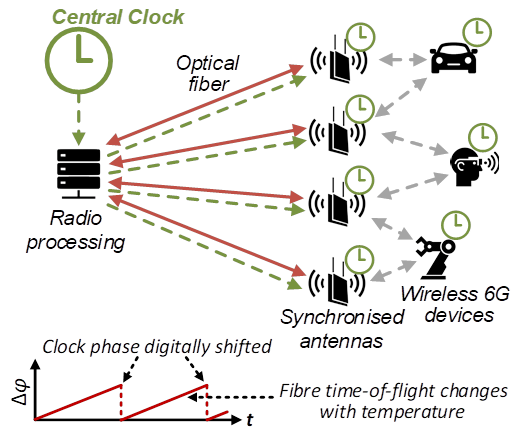
Case study: Low-Cost Digital Optical Fibre Time-of-Flight Compensation for Radio Antenna Synchronization in Future 6G Networks
Rinicom Ltd and University College London's ICCS demonstrated a new low-cost method for synchronizing radio antennas with trillionth-of-a-second precision using optical fiber in the National Dark Fibre Facility (NDFF)
Rinicom Ltd and the University College London Institute of Communications and Connected Systems (ICCS) demonstrated the synchronisation of radio antennas to trillionth of a second precision through field deployed optical fibre beneath the streets of London in the National Dark Fibre Facility (NDFF). A new low-cost digital approach was used to compensate for the changing time-of-flight through optical fibre due to changing environmental conditions such as temperature that otherwise would limit synchronisation performance.
New low-cost methods of synchronising radio antennas are crucial for enabling future 6G wireless devices such as automated vehicles and drones to work out their location to within centimeters.

The research led to two high-impact publications: a top-scored conference paper at the Optical Fiber Communications conference and an invited journal paper in the Journal of Optical Communications and Networking, spotlighted by Optica. The research has also led to a further UKRI InnovateUK grant on the distribution of clocks through optical fibre, USYNC.
Funding information: This work has been funded by ATOM, National Timing Centre (NTC) programme (10037307); Royal Academy of Engineering (RF2122-21-234).
For further information: contact Dr. Kari A. Clark, ndff@ee.ucl.ac.uk
Published: 24 Jan 2025
